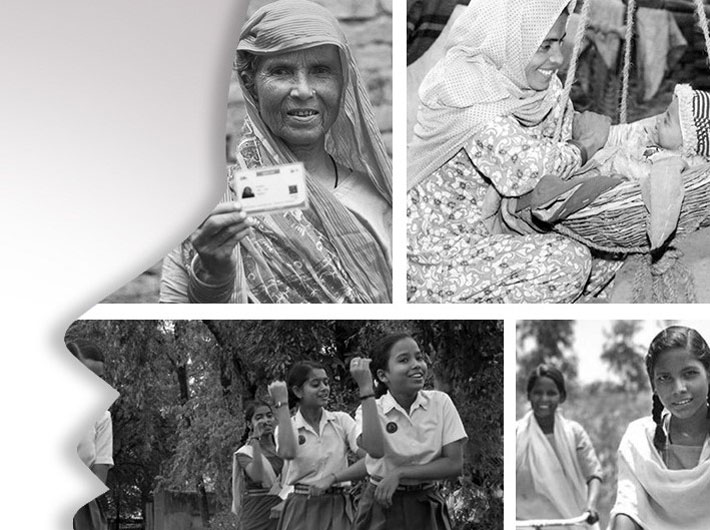Dramatic tech advances of the past decade along with govt initiatives are reducing gender gaps in healthcare
We have been taught since childhood that "health is wealth” and “if health is gone, everything is gone”. Indeed, health is one of the main markers of overall wellbeing of any country, and plays a significant role in various development indices like the multidimensional poverty index and the human development index. India’s commitment to the Sustainable Development Goals (SDGs), which include reducing the rate of maternal and infant mortality, improving health and nutrition and eliminating gender inequality, aims towards achieving a healthy nation status. This would pave the way for its journey towards being a developed nation.
In this development process, while women should have been at the centre stage as they are the primary caregivers in most households; unfortunately, they are left out as the most vulnerable human beings, often excluded and neglected in terms of health and development. Dr. B. R. Ambedkar had once remarked: "If you want to see the progress of a society, look at the progress of women." In the same vein, the health status of women is crucial in understanding a nation's health state.
The Government of India has undertaken numerous initiatives in order to realise the universal goal of healthcare coverage. The National Rural Health Mission (2005) and the National Health Mission (2013) have been able to alter the health scenario through expanding healthcare coverage and lowering healthcare disparity. Despite this, millions of women remain uncovered due to poor healthcare infrastructure, poverty and other socioeconomic and cultural conventions.
Covid-19 specifically brought the fragile health systems of the country much in limelight. And it was pretty evident that despite the government’s inclusive programmes and initiatives, it was challenging to effectively reach all women and children in need of free healthcare due to a communication and awareness gap.
The New Era of Digitalisation
The last decade has seen an unprecedented digital revolution in India's digital health initiatives. New doors of hope opened through eHealth Initiatives like Ayushman Bharat, National Digital Health Mission (NDHM), Ayushman Bharat–Pradhan Mantri Jan Arogya Yojana (PM-JAY), eHealth centres, eSanjeevani etc. that have been able to bridge the communication and awareness gap between healthcare providers and women up to a great extent. By prioritising digital health services, the government has laid the groundwork for a comprehensive digital health ecosystem, empowering individuals to access health records, book appointments, and avail telemedicine services with ease.
Recent data underscores the progress made in healthcare accessibility across India. For example, the percentage of households with any usual member covered under a health insurance/financing scheme has seen a significant uptick from 28.7% (NFHS-4, 2015-16) to 38.1% (NFHS-5, 2019-21). [For data, see: https://rchiips.org/nfhs/pdf/NFHS4/India.pdf]
Women and Digital Magic
The digitalisation of healthcare has brought about a significant change. Now the women are no more the behind-the-scenes magicians, conjuring wellness for their families, but at the forefront wielding smartphones to sprinkle a little digital magic on everyone's wellness journey! Visualise this: smartphones buzzing with notifications, apps that track everything from steps to sleep, and virtual doctors waiting in your pocket — this is the era where women are not just embracing digital health, but leading the charge with style and sass.
Digitalisation Bridging the Rural-Urban Divide
Juggling careers, family obligations and personal well-being, the urban women are now armed with the powerful tools of smartphones and digital health apps that help them harness the power of digital health technology to carve out precious moments of self-care. Whether it's scheduling virtual doctor appointments during their lunch break, tracking their fitness goals on the go, or accessing healthcare resources with the swipe of a finger, these women approach their health with the seasoned expertise available to them on these platforms.
Conversely, in rural areas, women come across a completely different set of challenges when it comes to accessing healthcare facilities. Geographical barriers, limited access to healthcare, and inadequate transportation infrastructure create significant obstacles for rural women seeking medical care. Moreover, the gender divide further intensifies these disparities, as cultural norms and societal expectations often prioritise men's healthcare needs over women's, leading to a lack of investment on women's health. The digital divide further compounds these challenges, as rural women often lack access to reliable internet connectivity and digital literacy skills, limiting their ability to leverage telemedicine and mobile health applications.
This divide is very much evident in the NFHS-5 (2019-21) dataset where the percent of women who have ever used internet is almost half (24.6%) of that of men (48.7%). Despite these hurdles, rural women are resilient and resourceful. Empowering them with digital literacy skills and access to technology will help them overcome barriers to healthcare access and promote gender equality in health outcomes.
The Resilient Indian Women
In the realm of digital health, women can be the architects of their own wellness journeys, sculpting their destinies with ferocity and grace. Let’s celebrate the resilience of Indian women as they balance tradition and progress, weaving their way through the digital maze with ingenuity and humour. And as they share their health hacks, memes, and yoga poses on YouTube and Facebook, they all deserve a virtual high-five. And as the women of today challenge stereotypes and defy expectations, they embody the spirit of this year's Women's Day theme — breaking the bias and forging an inclusive world. So, let's raise a toast to the women who navigate this digital landscape with grace and humour, proving that in the comedy of life, laughter truly is the best medicine.
Dr. Vaishnavi Sharma is an economist and a PhD from Indira Gandhi Institute of Development Research (IGIDR), Mumbai.
Dr. Balhasan Ali is a demographer and a PhD from International Institute for Population Sciences (IIPS), Mumbai.
Image courtesy: https://twitter.com/MoHFW_INDIA
